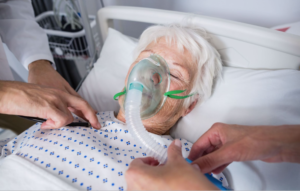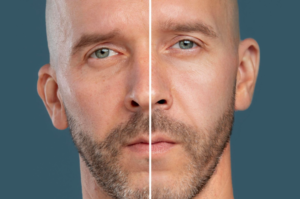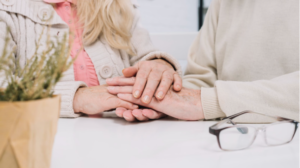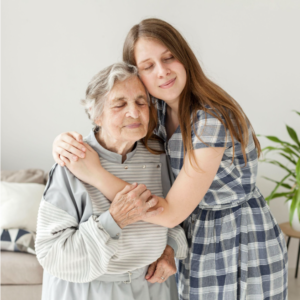Caring for a Loved One – Recognizing Pre-Active Dying Signs
In the journey of life, there comes a stage when we approach the inevitable end. This phase, known as the pre-active stage of dying, marks the beginning of the transition towards the end of life. Recognizing the signs and providing the right support during this crucial time is essential for both the individual and their family.
What is the Pre-Active Stage of Dying?
The pre-active phase of dying begins with a range of symptoms and signs that indicate the person is entering the final stages of their life. These symptoms may include changes in the dying person’s breathing, such as irregular or labored breathing. Additionally, you may observe a bluish or purple coloring of the skin, which is a natural process as the body’s circulation slows down.

In life, there’s a time when a person reaches the end of their life journey. This phase marks the commencement of the transition towards life’s ultimate conclusion. It is during this profound period that several distinct signs and symptoms manifest, serving as poignant reminders that the person is entering the closing chapters of their earthly journey.
Changes in Breathing: One of the prominent signs of the pre-active stage of dying is alterations in the person’s breathing pattern. Breathing may become irregular, shallow, or labored. These changes occur as the body’s respiratory systems begin to slow down. Loved ones and healthcare providers often notice these shifts in breathing, and it is a key indicator that the individual is nearing the end of their life.
Bowel Incontinence: Bowel incontinence may become more common as the body’s systems gradually shut down and the individual approaches imminent death. The final days of this pre-active dying stage require a compassionate and holistic approach to care, with hospice care often being the preferred choice to ensure comfort and support during this challenging time.
Emotional Signs: Emotionally, both the dying person and their loved ones may experience a range of emotions, including anxiety, sadness, and sometimes relief or acceptance. This emotional rollercoaster can be challenging for everyone involved, highlighting the importance of emotional and psychological support from healthcare professionals, hospice teams, and social workers.
Skin Color Changes: Another common physical change observed during this stage is a bluish or purple coloring of the skin. This discoloration is primarily a result of reduced circulation in the body. As the heart and circulatory system gradually weaken, blood flow to the extremities decreases, leading to this discoloration. While it can be distressing to witness, it’s important to understand that it’s a natural part of the dying process

Hospice care assumes a pivotal role in providing support and comfort during the pre-active stage of dying, a phase that marks the beginning of the end-of-life journey. This period is characterized by a series of physical and emotional changes, including alterations in the dying person’s breathing, bluish or purple skin coloring due to reduced circulation, and a variety of symptoms that indicate the individual is approaching the final stages of life.
“Life is a journey that must be traveled no matter how bad the roads and accommodations.” – Oliver Goldsmith
At this crucial juncture, hospice care steps in to offer comprehensive care and emotional assistance. The hospice team, consisting of highly trained professionals such as hospice nurses and social workers, plays a vital role in ensuring a dignified and peaceful transition for the individual and their family.
Hospice nurses are skilled in managing the physical symptoms that may emerge during this stage, such as pain, discomfort, and breathing difficulties. They work closely with the dying person to provide appropriate pain relief and ensure their comfort.
Social workers within the hospice team are invaluable in addressing the emotional and psychological aspects of this journey. They offer counseling and support not only to the individual but also to their family members, helping them cope with the impending loss and navigate the complex emotional terrain.
Hospice care recognizes that dying is a natural process, and their focus is on enhancing the quality of life during this challenging time. By attending to both the physical and emotional needs of the individual and their family, hospice care facilitates a compassionate and holistic approach, ensuring that the final days are as comfortable and meaningful as possible. In essence, hospice care is a vital support system that eases the burdens of the pre-active stage of dying and empowers individuals and their families to face the end of life with grace and dignity.

Caring for your loved one during the pre-active stage of dying is a deeply compassionate and challenging responsibility. To provide the best support, here are some practical tips:
“The greatest gift you can give someone is your time, your attention, your love, and your concern.” – Joel Osteen
Offer Comfort and Reassurance: Your presence and soothing words can provide immense comfort. Holding their hand, offering a gentle touch, and expressing your love can make a significant difference in their emotional well-being.
Listen and Engage in Meaningful Conversations: Engaging in conversations, reminiscing about cherished memories, or simply being a good listener can provide emotional support to the dying person. Sharing stories and feelings can help them find solace and connection during this stage.
Respect Their Wishes and Choices: It’s crucial to honor the person’s preferences regarding their care, treatment, and end-of-life decisions. Ensure their dignity and autonomy are preserved, even when making difficult choices.
Collaborate Closely with Health Care Professionals: Work in tandem with healthcare professionals, including hospice nurses and social workers. They can guide pain management, symptom control, and addressing any medical concerns that may arise during this phase.

As you and your loved one face imminent death, it’s natural to experience a mix of emotions, including sadness, grief, anxiety, and uncertainty. Coping with these feelings is essential for your well-being.
Consider the following:
Seek Emotional Support: Lean on friends, family members, or counseling services for emotional support. Sharing your thoughts and emotions with others can help you process your feelings and find solace.
Prepare Emotionally: Acknowledge that the end of life is a natural part of the human experience. Embrace your emotions, and allow yourself to grieve and come to terms with the situation.
Share the Journey: Don’t shoulder the emotional burden alone. Sharing the journey with others who care about your loved one can provide grief support and create a network of understanding and compassion.
Understanding and recognizing the pre-active stage of dying is crucial for providing compassionate care to your loved one. Embrace this natural process with the support of hospice care and healthcare professionals, and remember that seeking help and sharing the journey with others can ease the emotional burden during these final stages of life. Your presence and love can make a profound difference in the quality of your loved one’s final days.






Post Comments